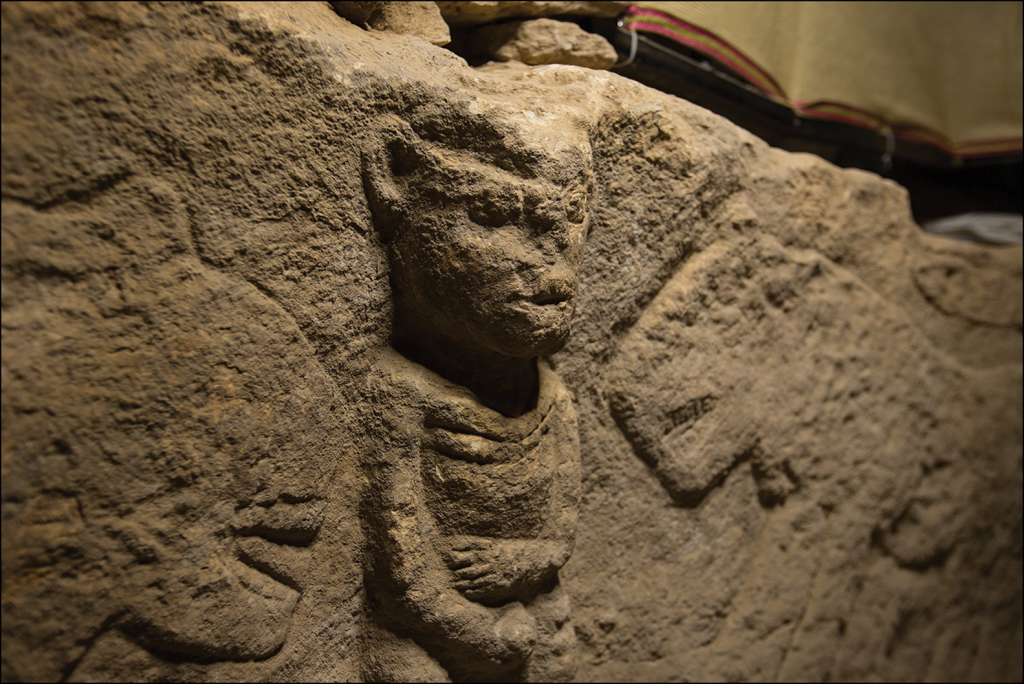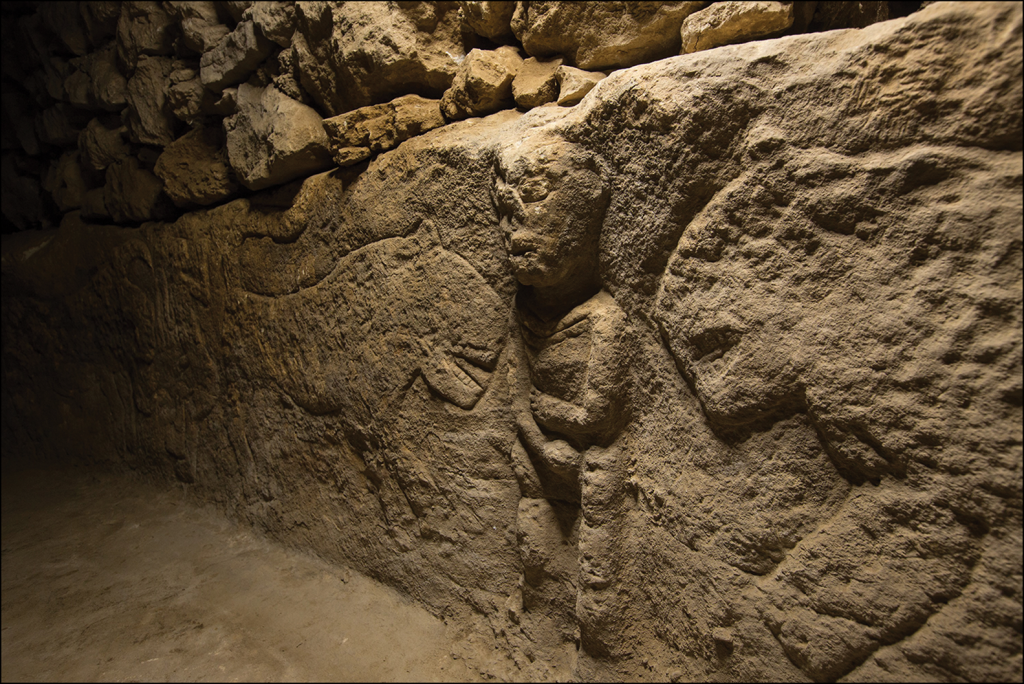Archaeology & History
Archaeologists Have Discovered One of the World’s Oldest Pieces of Narrative Art, and It’s Rather NSFW
The 11,000-year-old carving was found among the remains of a Neolithic structure in southeastern Turkey.

The 11,000-year-old carving was found among the remains of a Neolithic structure in southeastern Turkey.

Artnet News

Archaeologists in Turkey have discovered one of the world’s oldest known works of narrative art—and at the center of it is a man clutching his penis.
The 12-foot-long carved panel, which forms a bench, was found last year during the excavation of the remains of a Neolithic communal structure at the archaeological site of Sayburç in southeastern Turkey. Details of the discovery were shared this week in a paper published in the latest edition of the peer-reviewed journal Antiquity.
The piece, which is believed to be 11,000 years old, may reveal unprecedented insights into the ancient communities who once called the region home, according to the paper’s author, archaeologist Eylem Özdoğan.
Etched in deep relief on the panel’s right register is an upright man holding his member. He’s surrounded on either side by a pair of leopards, while on the left side of the carving is another human figure (also featuring an exaggerated phallus) with a bull.

The Sayburç relief (Photo: B. Köşker)
Whereas narrative is implied in older pieces of art—such as the 45,000-year-old painting of pigs found in an Indonesian cave in 2020—the newly-unearthed Sayburç panel seems to tell a progressive story; its scenes relate to each other, like cells on a film strip.
“This scene has the narrative integrity of both a theme and a story,” Özdoğan wrote, “and represents the most detailed depiction of a Neolithic ‘story’ found to date in the Near East, bringing us closer to the Neolithic people and their world.”
What’s more, it’s possible that the three-foot-tall relief served an educational, rather than purely aesthetic, purpose.
“The biggest difference is that cave paintings are made in places that are not accessible to everyone—they are hidden and not seen by everyone,” Özdoğan added in an interview with the Art Newspaper. “But the Neolithic images must have served in the assembly areas so that everyone can learn the story. Therefore, they can be seen as the first ontological narratives.”

Photo: K. Akdemir.
Located some 20 miles north of the Syrian border, Sayburç dates back to 9,000 B.C.E., a time in the Neolithic—or New Stone Age—period when nomadic hunter-gatherers transitioned to a more stationary existence. They erected long-term structures, developed stone tools, and learned to farm.
With this transition came an evolution in how humans viewed their place on the planet—and the Sayburç carving symbolizes that.
“In oral traditions, stories, rituals, and strong symbolic elements form the foundation of the ideologies that shape society beyond spirituality,” Özdoğan explained in the study.
“The Sayburç reliefs, then, can be seen in a similar light: the reflection of a collective memory that kept the values of its community alive.”
More Trending Stories:
Click Here to See Our Latest Artnet Auctions, Live Now